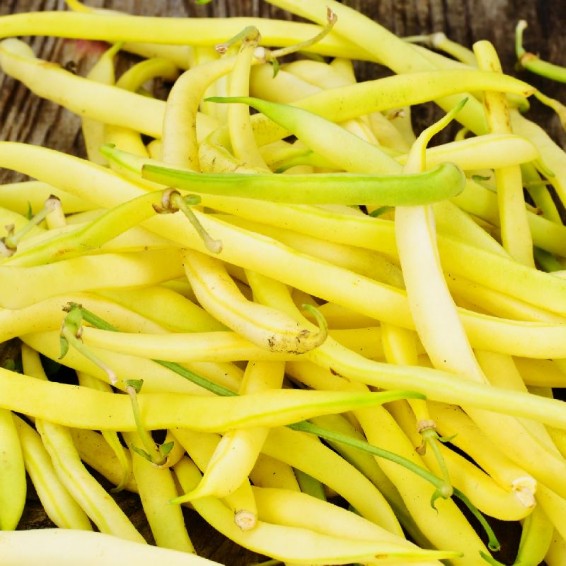Sungold Yellow Bean Seeds
Phaseolus vulgaris
- HOW TO GROW
- FAST FACTS
HOW TO GROW
Sowing: Direct sow seeds in rich, well drained soil in full sun at least a week after the last expected frost, since beans are quite sensitive to cold. If you have never planted beans in your garden before, treat the seeds with a powder inoculant to allow the process of nitrogen fixation to begin. Plant them 1" deep and 3-6" apart, in rows about 2' apart; press down the earth above them for good soil contact. These seeds rot easily in wet soil, so do not over water them. Germination should take place 7-10 days after planting. For companion planting benefits, plant bush beans near carrots, cucumbers, or corn; avoid planting them near onions.
Growing: After germination, maintain soil moisture; beans have shallow roots, and need water at least once a week if the weather is dry. Mulching the plants helps conserve moisture and discourages weeds.
Harvesting: Expect your first beans about ten weeks after germination. Daily harvesting improves production; for best flavor and tenderness, pick the beans when they are no larger than a pencil in thickness. Serve or preserve the same day you harvested them for the freshest taste.
Seed Saving: Near the end of the growing season, allow the beans to dry completely on the vine; the pods will be light brown, and the seeds will rattle inside. Remove the seeds from the pods. After the seeds are completely dry, store them in a cool, dry place for up to a year.
FAST FACTS
Latin Name: Phaseolus vulgaris
Type: Open Pollinated, Warm Season
USDA Zones: 3, 4, 5, 6, 7, 8, 9, 10, 11, 12
Seeds per Ounce: 80
Planting Method: Direct Sow
Sunlight: Full Sun
Height: 18 Inches
Color: Yellow
DESCRIPTION
HOW TO GROW
Sowing: Direct sow seeds in rich, well drained soil in full sun at least a week after the last expected frost, since beans are quite sensitive to cold. If you have never planted beans in your garden before, treat the seeds with a powder inoculant to allow the process of nitrogen fixation to begin. Plant them 1" deep and 3-6" apart, in rows about 2' apart; press down the earth above them for good soil contact. These seeds rot easily in wet soil, so do not over water them. Germination should take place 7-10 days after planting. For companion planting benefits, plant bush beans near carrots, cucumbers, or corn; avoid planting them near onions.
Growing: After germination, maintain soil moisture; beans have shallow roots, and need water at least once a week if the weather is dry. Mulching the plants helps conserve moisture and discourages weeds.
Harvesting: Expect your first beans about ten weeks after germination. Daily harvesting improves production; for best flavor and tenderness, pick the beans when they are no larger than a pencil in thickness. Serve or preserve the same day you harvested them for the freshest taste.
Seed Saving: Near the end of the growing season, allow the beans to dry completely on the vine; the pods will be light brown, and the seeds will rattle inside. Remove the seeds from the pods. After the seeds are completely dry, store them in a cool, dry place for up to a year.
FAST FACTS
Latin Name: Phaseolus vulgaris
Type: Open Pollinated, Warm Season
USDA Zones: 3, 4, 5, 6, 7, 8, 9, 10, 11, 12
Seeds per Ounce: 80
Planting Method: Direct Sow
Sunlight: Full Sun
Height: 18 Inches
Color: Yellow




